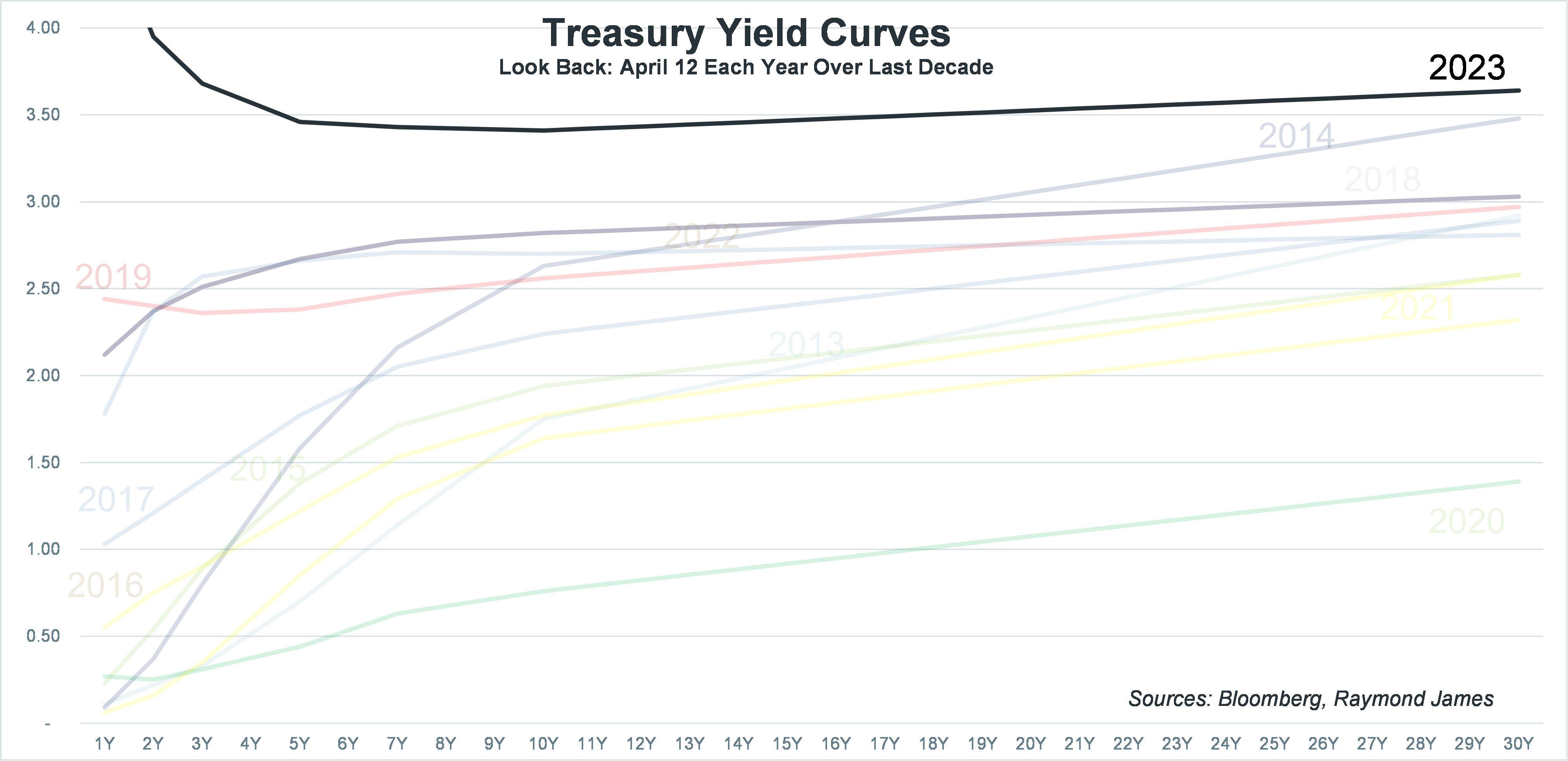The treasury curves still tells us: Lock in longer
Doug Drabik discusses fixed income market conditions and offers insight for bond investors.
Getting lost in the moment is easy to do. When planning and executing your fixed income portfolio, looking long term is more likely to get you to your goal. Fixed income portfolio allocations are often meant to first protect principal and second, to optimize income and cash flow per your specific circumstances.
The Treasury curve is inverted creating the urge to buy short and receive higher yields versus extending out on the curve and taking on greater interest rate risk. However, this may not optimize your long term income. The graph below depicts the Treasury yield curve annually on the business day closest to April 12 for each of the last ten years. They are all faded out except the current curve. Over the last decade, rates have traded in a wide range and although we are not at the recent highs, clearly we are at rates higher than we’ve seen over most of the past decade.
Longer maturity bonds lock in yield and cash flow for a longer period of time while still providing a known date for a bond’s face value to be returned, regardless of interest rate fluctuations. As long as you hold an individual bond to maturity and barring a default, the only change you will see is the price on your statement and whether that turns red or black, your realized cash flow and income are not changing. If a recession occurs, it is logical to conclude that interest rates will fall. The window of opportunity may be limited depending on continued Fed actions and economic output. The one certainty is that rates are as favorable as they have been for most of the last decade. Lock in for longer… add duration.
The author of this material is a Trader in the Fixed Income Department of Raymond James & Associates (RJA), and is not an Analyst. Any opinions expressed may differ from opinions expressed by other departments of RJA, including our Equity Research Department, and are subject to change without notice. The data and information contained herein was obtained from sources considered to be reliable, but RJA does not guarantee its accuracy and/or completeness. Neither the information nor any opinions expressed constitute a solicitation for the purchase or sale of any security referred to herein. This material may include analysis of sectors, securities and/or derivatives that RJA may have positions, long or short, held proprietarily. RJA or its affiliates may execute transactions which may not be consistent with the report’s conclusions. RJA may also have performed investment banking services for the issuers of such securities. Investors should discuss the risks inherent in bonds with their Raymond James Financial Advisor. Risks include, but are not limited to, changes in interest rates, liquidity, credit quality, volatility, and duration. Past performance is no assurance of future results.
Investment products are: not deposits, not FDIC/NCUA insured, not insured by any government agency, not bank guaranteed, subject to risk and may lose value.
To learn more about the risks and rewards of investing in fixed income, access the Financial Industry Regulatory Authority’s website at finra.org/investors/learn-to-invest/types-investments/bonds and the Municipal Securities Rulemaking Board’s (MSRB) Electronic Municipal Market Access System (EMMA) at emma.msrb.org.


